
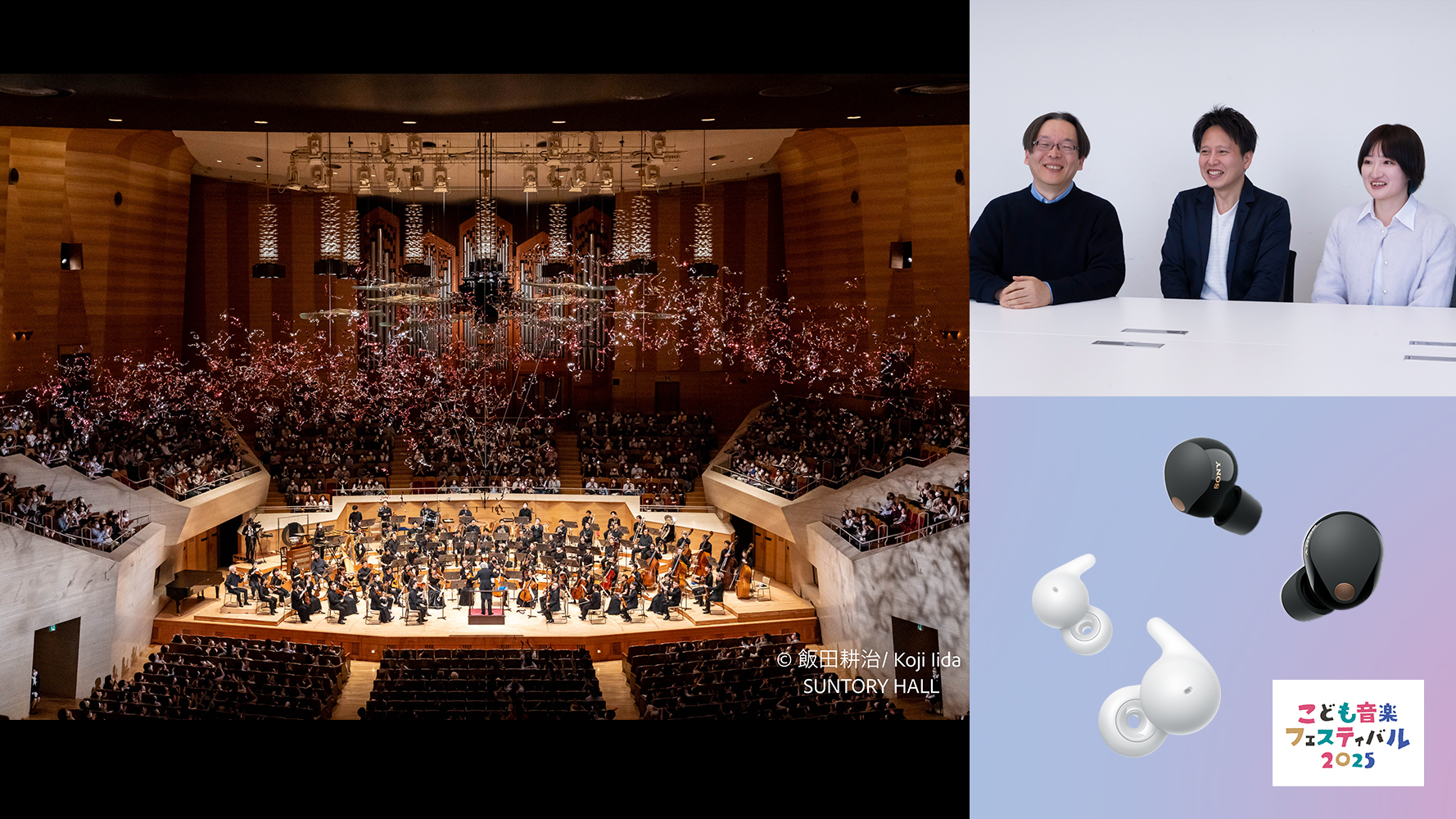
"Technology that fulfills the wish to hear" Sony's Headphones × Auracast™
May 15, 2025
Imagine if everyone could enjoy entertainment together in the same place. Sony has embarked on an initiative called "Music for All," creating an inclusive festival experience accessible to everyone. From Saturday, May 3 to Tuesday, May 6, 2025, the "Music Festival for Children and Young People 2025" took place at Suntory Hall, utilizing both the Main Hall and the Blue Rose (small hall). At this festival, designed to introduce children to classical music, Sony showcased its innovative "technology that fulfills the wish to hear." We spoke about this with Sony's accessibility lead Ryu Okuda from the Product Strategy Department, Co-creation Strategy & Development Division, as well as lead developers Tsuyoshi Nakamura and Miku Hanazawa from the Acoustic Core Technology Development 2, Audio System Technology Division, Technology & Engineering Center.
Profile

Accessibility Lead
Product Strategy Department,
Co-creation Strategy & Development Division,
Sony Corporation
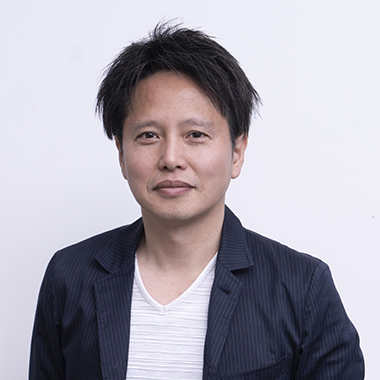
System Architecture Lead
Acoustic Core Technology Development Department 2,
Audio System Technology Division, Technology & Engineering Center,
Sony Corporation
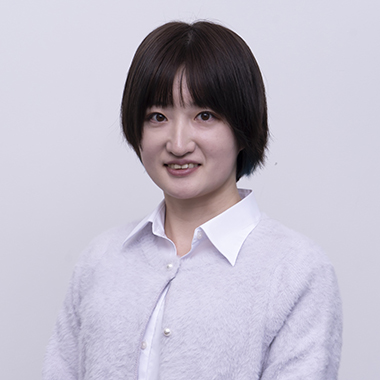
System Architecture Lead
Acoustic Core Technology Development Department 2,
Audio System Technology Division, Technology & Engineering Center,
Sony Corporation
Initiative at "Music Festival for Children and Young People 2025"
── Can you tell us about the initiative?
Okuda:For this initiative, we integrated Auracast™, a new Bluetooth® feature, with Sony's compatible headphones and smartphones, allowing children with hearing difficulties to customize their listening experience and make the most of the "Music Festival for Children and Young People 2025."
── How did this project start?
Okuda:It began when the Sony Music Foundation reached out to us ahead of the "Music Festival for Children and Young People 2025," expressing their wish to deliver the joy of music to everyone, regardless of disability, age, or personal circumstances. Through discussions, we proposed this solution.
Listening to Live Music via Headphones
── Could you tell us more about this initiative involving Auracast?
Okuda:First, Auracast is distinctive because it can transmit high-quality audio data to an unlimited number of receiving devices simultaneously. Traditional Bluetooth could only transmit data to one receiver at a time. By using this Bluetooth feature with Sony's Auracast-compatible headphones and smartphones, we were able to share the live musical performance audio with many listeners at once.
── Can you walk us through how the sound from the live performance reaches the headphones?
Nakamura:First, the audio from the live performance is captured using microphones. Then, this audio is sent via an Auracast transmitter to the headphones. By adjusting the headphone audio on an Auracast-compatible smartphone, users can tailor the sound to what's most comfortable for them.
── So, in addition to the live sound from the stage, you're also hearing audio through the headphones?
Okuda:That's right. By using the headphones' advanced ambient sound feature, users can listen to the live performance directly while also hearing the Auracast audio layered on top. The headphones allow users to fine-tune the audio sent via Auracast. With options like volume control and equalizer settings, even those who struggle to hear certain frequencies can customize the sound to their needs.
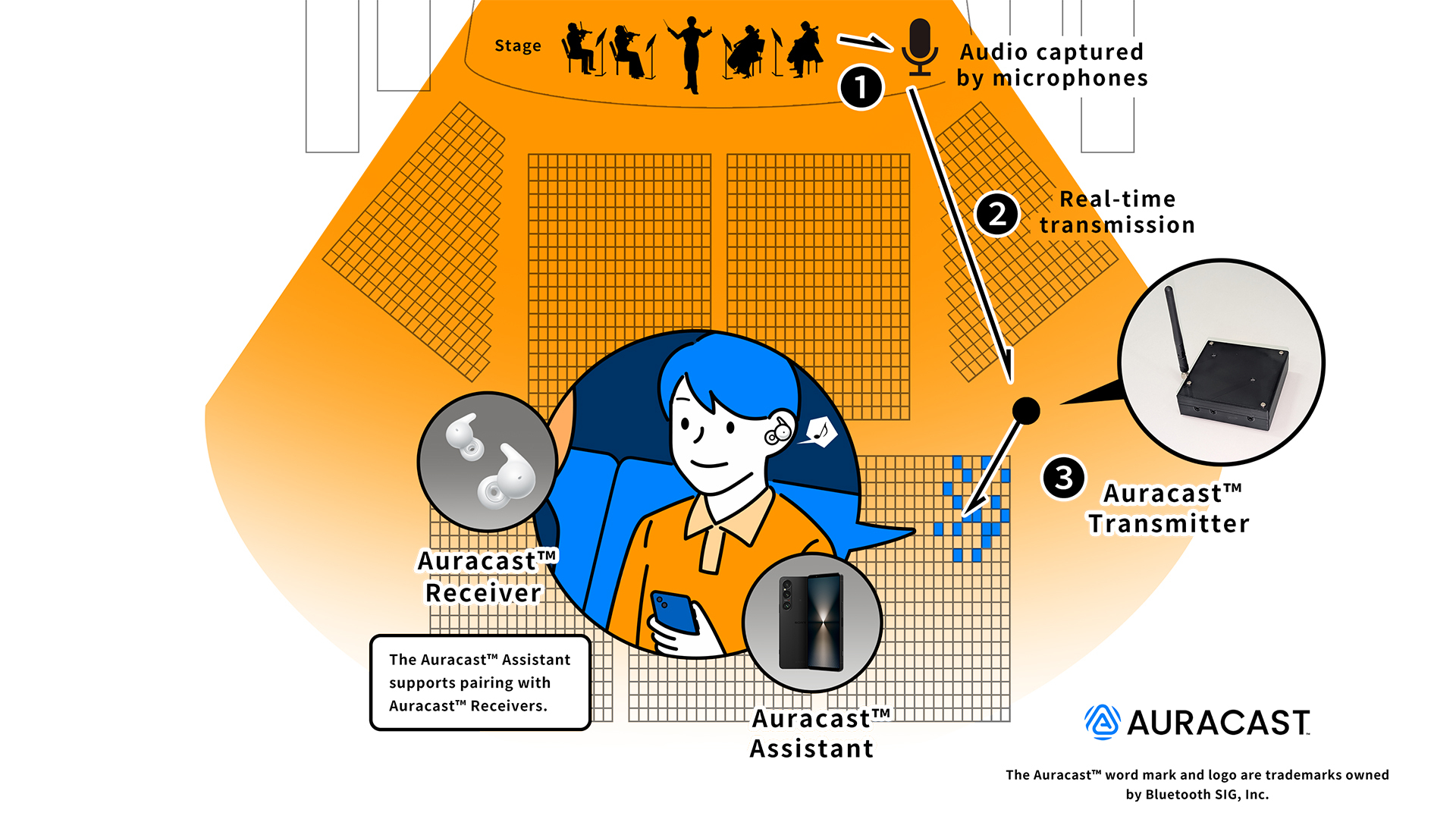
Achievements Made Possible by Sony
── This initiative relied on Sony's headphones being compatible with Auracast. In what ways did Sony's technology specifically enhance the experience by integrating Auracast?
Nakamura:There are two main aspects. First, Sony's headphones are designed with exceptional resolution and clarity, providing a large-scale, concert-hall-like sound environment. We place great emphasis on the quality of sound reproduction and silence. Second, Auracast enables high-quality audio transmission. By combining these two aspects, we were able to deliver a concert experience through headphones that feels natural and comfortable, without any sense of incongruity. Classical music is especially diverse, spanning from subtle instrumental nuances to richly layered powerful sounds, and I believe we have created an environment satisfying for listeners in any situation. Although we targeted children with hearing difficulties, even listeners without such challenges would appreciate this sound environment. As engineers specializing in wireless technology, we also paid close attention to ensuring uninterrupted Auracast transmission. People often associate wireless audio with interruptions, which would negate even the best audio experience, so achieving stable connectivity was critical.
Hanazawa:This time, Sony provided the Auracast transmitter, Auracast assistant (smartphone), and Auracast receivers (headphones). By optimizing each component's settings, we ensured stable connections, minimized latency, and achieved superior sound quality, covering every essential aspect.
── While it may have seemed that the focus would be solely on configuring Sony's headphones as the receivers, in reality, Auracast required precise coordination across the entire audio chain, from capturing the stage performance to converting and transmitting the sound. Given that, what was the biggest challenge?
Nakamura:One major challenge was audio latency. Hearing live sound simultaneously through headphones and ambient audio requires precise synchronization. Human ears are incredibly sensitive. Even slight delays create noticeable discomfort. Suntory Hall, the venue for the "Music Festival for Children and Young People 2025," has both a main and a smaller hall, each with different sound travel distances. To ensure that the sound heard through the headphones closely matched the live audio in each hall, we made careful adjustments tailored to each space. This level of synchronization wasn't something that could be achieved by fine-tuning the transmitter or receiver alone. It required a coordinated approach using both technologies together.
── What specific adjustments did you make to achieve this synchronization?
Nakamura:We discussed extensively with Suntory Hall, prepared several scenarios for optimal server placement, and then refined these on-site. The smaller hall presented particular challenges since the sound originates directly from the front, necessitating extremely precise server-side adjustments to match headphone audio seamlessly. Auracast, though a new feature, shares Bluetooth's tendency for subtle changes in latency depending on how it's configured. Adjustments that typically remain inaccessible to users were meticulously fine-tuned by us as Bluetooth specialists.
Okuda:During tests conducted both at Suntory Hall and internally under similar conditions, no one reported any discomfort. Achieving precise synchronization despite distance-induced latency differences was a significant accomplishment for this initiative.
Hanazawa:Another challenge was preserving the integrity of the orchestra's live sound during transmission. The analog audio captured from the stage had to be digitally converted for Auracast transmission, and in doing so, we had to consider the dynamic range, that is, the range between the softest and loudest sounds that can be transmitted. Since orchestral music has an exceptionally wide dynamic range, converting it as-is would exceed the transmittable levels, resulting in unwanted static or noise. Hence, careful pre-transmission adjustments were necessary to prevent noise without compromising audio quality. Determining the optimal balance was particularly difficult.
Nakamura:Lowering the volume excessively to avoid distortion would degrade audio quality or make it inaudible. Hanazawa developed and documented procedures to ensure consistently high audio quality, which allowed us to handle most of the adjustments during rehearsals. However, the Sony Music Foundation mentioned that performers often get more enthusiastic during the actual performance, which can lead to higher volumes than in rehearsal.
Hanazawa:So, while we finalized initial settings in advance, we also set up an on-site monitoring system to make real-time manual adjustments in case the volume unexpectedly increased.
── What aspects did you keep in mind when designing this for children?
Okuda:The primary goal was for the children to enjoy the concert comfortably and with ease.
Hanazawa:For example, headphones were handed out already connected to Auracast, and the equalizer settings were preconfigured based on prior research to make the sound easier to hear. This setup allowed children to enjoy cutting-edge technology without having to deal with any complicated operations.

New Possibilities Revealed by Unrecognized Needs
── Could you share any new discoveries made through this initiative?
Okuda:Originally, we received a request from the Sony Music Foundation and provided the overall solution. But through field tests and research, we came to realize that far more people than we had expected live with the inconvenience of not being able to hear certain sounds, whether it's difficulty hearing music, specific frequencies, or hearing loss in just one ear that makes attending concerts a challenge. While the system we developed isn't a hearing aid and has its limitations, the ability to hear Bluetooth audio alongside ambient sounds proved to be a meaningful experience for users.
Nakamura:As an engineer, when I first heard from Okuda about this project, I wanted to pack it with all kinds of advanced audio-processing features. I even tried adding some of the new functions we were developing, but internally, the response was a quick "we don't need any of that" (laughs). In classical music, there's a strong preference for a sound that feels as natural as possible. In this context, "natural" really means "free of any sense of unnaturalness." At first, I remember thinking, "If there's no difference from real life, then what's the point of wearing headphones?" But I came to realize that, especially in classical music, the fact that the sound from headphones or earphones doesn't feel artificial is actually high praise. We came to understand that it's crucial to respond to users' needs in a way that fits their specific environment.
Hanazawa:Until now, our focus had mostly been on how to reproduce sound through headphones and earphones. But the idea of listening to live music and headphone audio at the same time received a lot of positive feedback during internal testing. It was a great reminder that technology still has the power to create new and enriching experiences.
── How would you like to further develop this initiative in the future?
Okuda:For years, we've focused on making our products accessible for use at home. But through this initiative, like the "Music Festival for Children and Young People 2025," we were reminded of how important it is to ensure that people can enjoy entertainment naturally and comfortably outside the home as well. There are so many types of live entertainment people enjoy outside the home, like speeches, performances, and dances, and we'd love to keep expanding our technologies so that users will be able to enhance those experiences through our products.
Nakamura:This time, the focus was all about creating a natural listening experience. But personally, I haven't given up on my dream of "augmented audio" just yet (laughs). For example, VR goggles enhance your vision by displaying digital images alongside what you actually see. In the same way, I think there's real potential in enhancing our hearing, like layering audio through earphones while still being able to hear the real-world sounds around you. Imagine walking through a real haunted house where you can actually see ghosts appearing in front of you, while also hearing spooky sounds swirling from left to right through your headphones, layered on top of the voices of other visitors. I think creating that kind of experience would be fascinating. Right now, visuals are being augmented, but our hearing is still limited to whatever's coming through the earphones, so audio remains unaugmented. That's why I see a lot of potential for enhancing audio in virtual environments. As an engineer, I never run out of dreams when it comes to new technology.
Hanazawa:I think there's a lot of potential in delivering a creator's voice or sound in a way that feels truly real. For example, imagine streaming the exact audio recorded at a live venue and letting a large audience hear it all at once, as if they were actually there.
A Future Where Everyone Can Share Kando(emotion)
── Sony aims to create "a future where everyone can share Kando(emotion)". What are your thoughts on future initiatives?
Okuda:This initiative was primarily designed with people who have hearing difficulties or mild hearing loss in mind. Going forward, we want to keep striving toward a future where everyone can experience the joy of entertainment, regardless of their age, individual abilities, disabilities, or life circumstances, like caregiving or parenting. That's the kind of future we truly hope to create.
Nakamura:Through this project, we learned that every user has different needs. Providing personalized services for each individual or helping customers select what suits them best is challenging. That's why we need technologies that can either automatically adjust to the user's needs or make it easy for them to fine-tune settings themselves, like the equalizer settings we introduced in this project. This way, everyone can enjoy entertainment in the best possible way. Our goal is to create headphones that make this possible.
Okuda:The ultimate goal is to have everything perfectly adjusted the moment you put on your headphones.
Nakamura:Preferences vary by individual and also depend on the environment, so engineers, including those beyond our team, are working hard to realize those goals.
Hanazawa:I believe that creating products that reflect the diverse needs of different users is what gives them real value. We want to keep researching what kinds of needs are out there. Some only become visible once you start putting ideas into practice, so we also want to uncover those less obvious needs.
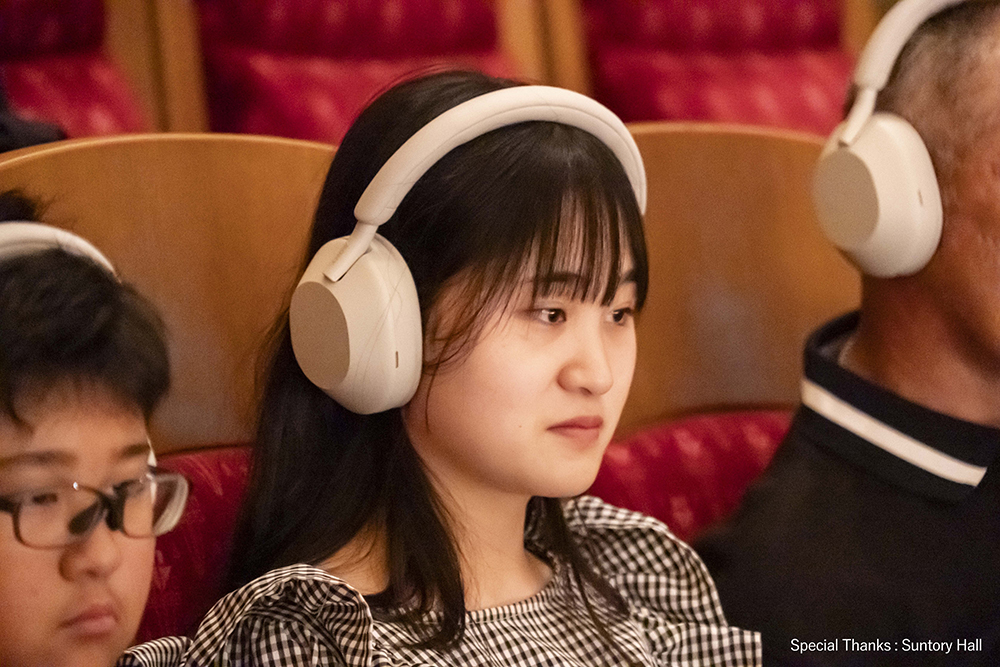
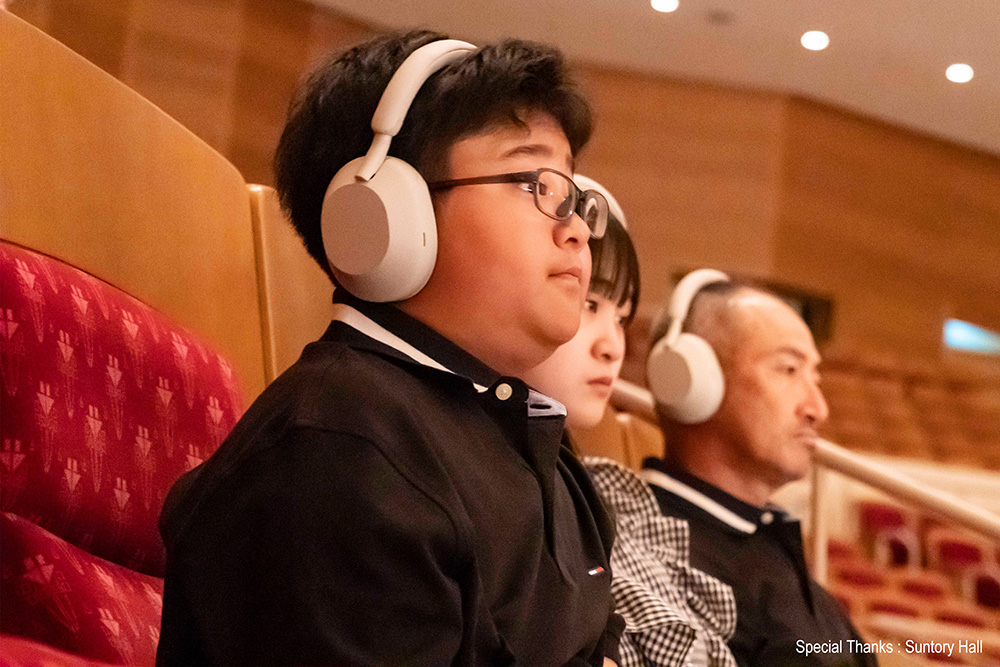
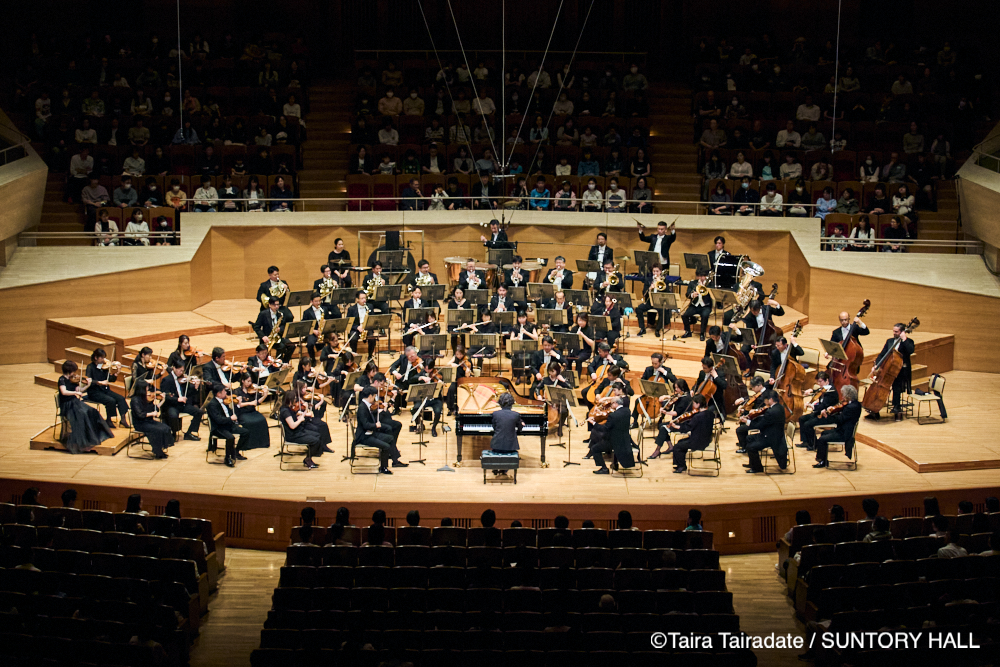
Sony will continue to advance accessibility, staying closely attuned to its users' needs, in order to help realize a future where everyone can share Kando(emotion) of entertainment.
- The Auracast™ word mark and logo are trademarks owned by Bluetooth SIG, Inc.
- The Bluetooth® word mark and logo are registered trademarks owned by Bluetooth SIG, Inc.
- *The photo wearing headphones was taken during the rehearsal.
